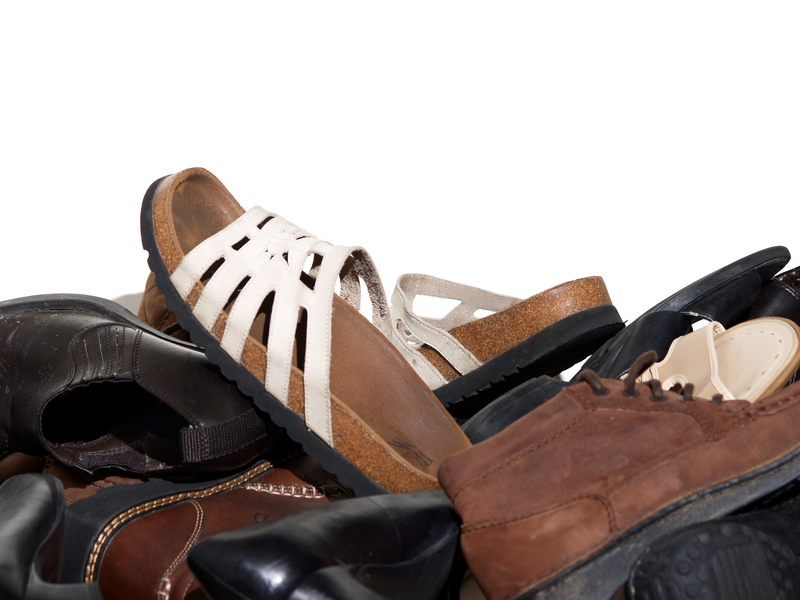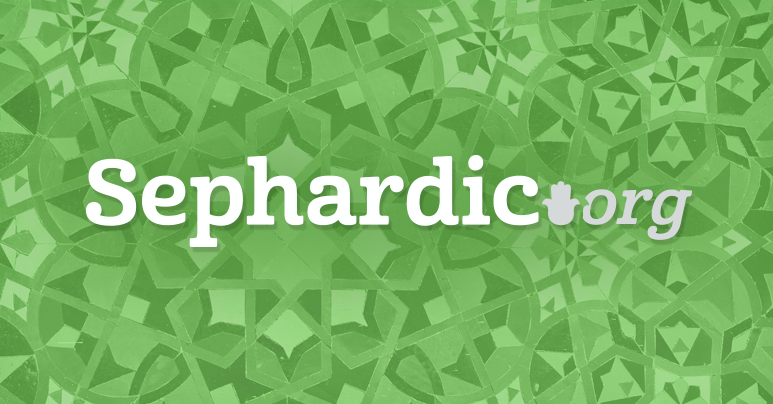
Kohamin are to Remove their Shoes as they Ascend Upon the Platform
We are taught in this weeks parasha of how the Kohanim are enjoined to bless Israel. The Talmud (Sota 40) teaches that when ascending upon the דוכן or platform to bless - they are to remove their shoes. This is not the first time the Torah enjoins one who experiences an elevated status to remove one's shoes.
As Moshe encounters the burning bush - he is told that he is about to face the שכינה and hence must remove his shoes. These represent a sampling of instances when a spiritual ascent must be accompanied by the removal of shoes. What must also be addressed though is the other end of the spectrum - namely why is it that in instances when there is a spiritual descent do we also find a requirement to remove the shoes?
Examples include when entering a state of mourning or excommunication. In order to understand this paradox it behooves us to learn about the spiritual nature of shoes and how the requirement to remove them reflects the spiritual state of the nation or of the individual wearer.
Spiritual Nature of Shoes
Firstly we need to remind ourselves that we are spiritual beings in the sense that everything we do or say has a parallel effect in the celestial worlds. Halakhically (Biblically) speaking (Yev 102) shoes or נעלים are exclusively those that are made of עור or animal skin. As the verse 16:10 teaches in Yehezkel - ואנעלך תחש - I cover you in animal hide.
This tahash was used as one cover for the roof of the Mishkan and in some of the covers of the holy temple vessels during travel (Shab 28). The shoes represent an aspect of the spiritual clothing אור מקיף provided originally to אדם הראשון after the sin - from an elevated source (Imma-Binah) in the spiritual world. It would thereby offer a newly required protection for both the wearer (Adam) and at the same time for the lowest channel in the spiritual world (Asilut) called the Shehina or Divine Presence.
When we put on our shoes according to halakha (SA OH 2:4) with the proper intentions - we offer thereby protection for the Shehina and by extension ourselves of access of any negative forces. This is the secret of the morning blessing שעשה לי כל צרכי - It is associated with the light that descends and surrounds the Divine presence. We can now begin to appreciate the paradox - that shoes are to be removed both when we are in an elevated state or conversely when in a lowly spiritual state.
When in an elevated state there is no need for protection via the aspect of עור - as during this time we and the שכינה so to say have regained the original אור of light that protected Adam. When in a lowly spiritual state - we and the שכינה are not granted any spiritual protection - even via the עור - hence the wearing of shoes has no spiritual value and are even considered forbidden to be worn. Shoes take on their most important spiritual effect when we are "in the middle spiritually."
Hence the blessing is omitted on days when the Shehina is not endowed with this surrounding light. Not on Yom Kippour when the Divine Presence ascends to an elevated state without any need for this protection; nor on Tish'a Be'av when the Shekhina descends to a lower state without any opportunity for protection from above.
Lowly Spiritual State - Shoes Must be Removed
On the national day of mourning תשעה באב - the nation refrains from reciting the berakha שעשה לי כל צרכי - According to R. HaAri it is apparent that this is due to the fact that the Divine Presence descends on that day from her elevated state. Leather shoes are not to be worn - as their spiritual effect - which is associated with the אור מקיף or surrounding light that would normally offer protection for the שכינה is ineffective on that day.
The wearing of leather shoes on that day is not only unnecessary in advancing any spiritual benefit - but it is considered - counter productive and harmful. When one enters a state of אבלות he is obligated to remove his leather shoes. This is an expression of his new lowly spiritual state along with his personal relationship with the שכינה - which are exposed to the negative forces. The Talmud (BM 59) relates that when R. Akiva advised R. Eliezer that he had been excommunicated by the Sages - the latter immediately ripped his clothing and removed his shoes. This in accordance with the Halakha (MK 15) that a מנדה is forbidden to wear leather shoes.
We know that both the אבל and the מנדה have descended spiritually whereby the עור נעל cannot offer them nor the aspect of the Divine Presence associated with their souls this spiritual protection. Finally the Talmud (MK 15) is not conclusive if a מצורע also descends spiritually to such a state that would require him to remove his leather shoes.
Elevated Spiritual State - Removal of Shoes
The Talmud teaches in two places (Ber 62 + Hag 4)- that one might not ascend upon the Temple courtyard wearing leather shoes. This holds true for those of Israel who bring their (holiday) קרבנות as well as the כהנים who are serving in the בית המקדש - In fact shoes are not part of the service apparel of the כהן הדיוט nor the כהן גדול - It is apparent that the Temple Courtyard is similar to the earth upon which Moshe stood - as both are considered Holy אדמת קודש - hence there is no need for the shoes and wearing them is an affront to the spiritual level attained.
Our Rabbi's have hinted that the prophet ישעיהו - reprimanded the people for not recognizing the elevated state of the courtyard when he called Israel רמוס חצרי - tramplers or treaders with unwarranted shoes. On a national level - we must recognize that we are elevated on יום כפור to a level of אדם הראשון - before the חטא - in that we no longer need the עור - as apparently we are once again enveloped in something resembling the original אור of גן עדן - I think the כהנים must meditate upon this idea daily as they ascend the דוכן removing their shoes - realizing their elevated state as they act as Hashem's conduit to bless Israel.
The Land You Are Standing on is Holy
The Sages consider the incident of Moshe at the burning bush or the future location of הר סיני - as one prototype for spiritual elevations requiring the removal of the shoes. Moshe is taught here apparently for the first time the idea of sacred space - כי המקום אשר אתה עומד עליו אדמת קדש הוא - Not only will Israel gain elevation via or at specific "times" such as on יום כפור - but there are certain places on earth that were not effected by the curse of the earth after the sin of Adam.
This might have been a novel idea considering that all were aware of the verse in Beresheet 3:17 - ארורה האדמה בעבורך - The earth is cursed and one is bound to it. This is apparently the secret of the Midrash that teaches that חנוך was a shoe maker - and via each stitch he united the Holy One Blessed Be He with the Shekhina. This was a necessity and holy act due to the state of the world - post Adam.
What was revealed to Moshe was that there are certain spaces that take on גן עדן prior to the sin. These include the Temple courtyard and the area where Moshe stood on Sinai. Finally the Talmud teaches - and the Halakha codifies (SA OH 128:5) that this is also true of the דוכן or platform during the time of ברכת כהנים - So as the כהנים ascend they are to remove their shoes and bless the people from this holy space in their elevated state.







